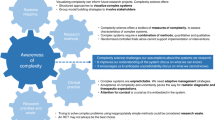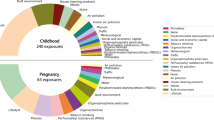Abstract
Medical interventions for life-threatening pediatric conditions often oblige ongoing and complex medical care for survivors. For some children with medical complexity, their caretaking needs outstrip their parents’ resources and abilities. When this occurs, the medical foster care system can provide the necessary health care and supervision to permit these children to live outside of hospitals. However, foster children with medical complexity experience extremes of social and medical risk, confounding their prognosis and quality of life beyond that of similar children living with biologic parents. Medical foster parents report inadequate training and preparation, perpetuating these health risks. Further, critical decisions that weigh the benefits and burdens of medical interventions for these children must accommodate complicated relationships involving foster families, caseworkers, biologic families, legal consultants, and clinicians. These variables can delay and undermine coordinated and comprehensive care. To rectify these issues, medical homes and written care plans can promote collaboration between providers, families, and agencies. Pediatricians should receive specialized training to meet the unique needs of this population. National policy and research agendas could target medical and social interventions to reduce the need for medical foster care for children with medical complexity, and to improve its quality for those children who do.
Similar content being viewed by others
Log in or create a free account to read this content
Gain free access to this article, as well as selected content from this journal and more on nature.com
or
References
Children’s Bureau. Administration on Children, Youth and Families. U.S. Department of Health and Human Services. Trends in Foster Care and Adoption: FFY 2002-FFY 2013. http://www.acf.hhs.gov. 2014.
Wildeman C, Emanuel N. Cumulative risks of foster care placement by age 18 for U.S. children, 2000-2011. PLoS One 2014;9:e92785.
Larson K, Russ SA, Crall JJ, Halfon N. Influence of multiple social risks on children’s health. Pediatrics 2008;121:337–44.
Stein RE, Siegel MJ, Bauman LJ. Double jeopardy: what social risk adds to biomedical risk in understanding child health and health care utilization. Acad Pediatr 2010;10:165–71.
Mekonnen R, Noonan K, Rubin D. Achieving better health care outcomes for children in foster care. Pediatr Clin North Am 2009;56:405–15.
Wildeman C, Waldfogel J. Somebody’s Children or Nobody’s Children? How the Sociological Perspective Could Enliven Research on Foster Care. Annu Rev Sociol 2014;40:599–618.
Newacheck PW, Strickland B, Shonkoff JP, et al. An epidemiologic profile of children with special health care needs. Pediatrics 1998;102(1 Pt 1):117–23.
McPherson M, Arango P, Fox H, et al. A new definition of children with special health care needs. Pediatrics 1998;102(1 Pt 1):137–40.
Institute of Medicine (U.S.). Committee on Identifying Priority Areas for Quality Improvement. Adams K, Corrigan J . Priority Areas for National Action: Transforming Health Care Quality. National Academies Press: Washington, DC, 2003.
Burns KH, Casey PH, Lyle RE, Bird TM, Fussell JJ, Robbins JM. Increasing prevalence of medically complex children in US hospitals. Pediatrics 2010;126:638–46.
Srivastava R, Stone BL, Murphy NA. Hospitalist care of the medically complex child. Pediatr Clin North Am 2005;52:1165–87, x.
Cohen E, Kuo DZ, Agrawal R, et al. Children with medical complexity: an emerging population for clinical and research initiatives. Pediatrics 2011;127:529–38.
Simon TD, Berry J, Feudtner C, et al. Children with complex chronic conditions in inpatient hospital settings in the United States. Pediatrics 2010;126:647–55.
Hall DE. The care of children with medically complex chronic disease. J Pediatr 2011;159:178–80.
Strauss D, Shavelle R, Reynolds R, Rosenbloom L, Day S. Survival in cerebral palsy in the last 20 years: signs of improvement? Dev Med Child Neurol 2007;49:86–92.
Horbar JD, Badger GJ, Carpenter JH, et al.; Members of the Vermont Oxford Network. Trends in mortality and morbidity for very low birth weight infants, 1991-1999. Pediatrics 2002;110(1 Pt 1):143–51.
Wilson-Costello D, Friedman H, Minich N, Fanaroff AA, Hack M. Improved survival rates with increased neurodevelopmental disability for extremely low birth weight infants in the 1990s. Pediatrics 2005;115:997–1003.
Kaiser JR, Tilford JM, Simpson PM, Salhab WA, Rosenfeld CR. Hospital survival of very-low-birth-weight neonates from 1977 to 2000. J Perinatol 2004;24:343–50.
Feudtner C, Hays RM, Haynes G, Geyer JR, Neff JM, Koepsell TD. Deaths attributed to pediatric complex chronic conditions: national trends and implications for supportive care services. Pediatrics 2001;107:E99.
Kuo DZ, Cohen E, Agrawal R, Berry JG, Casey PH. A national profile of caregiver challenges among more medically complex children with special health care needs. Arch Pediatr Adolesc Med 2011;165:1020–6.
Ghose R. Complications of a medically complicated child. Ann Intern Med 2003;139:301–2.
Kuo DZ, Goudie A, Cohen E, et al. Inequities in health care needs for children with medical complexity. Health Aff (Millwood) 2014;33:2190–8.
Newacheck PW, Inkelas M, Kim SE. Health services use and health care expenditures for children with disabilities. Pediatrics 2004;114:79–85.
Coller RJ, Nelson BB, Sklansky DJ, et al. Preventing hospitalizations in children with medical complexity: a systematic review. Pediatrics 2014;134:e1628–47.
Alhusen JL, Lucea MB, Bullock L, Sharps P. Intimate partner violence, substance use, and adverse neonatal outcomes among urban women. J Pediatr 2013;163:471–6.
Staneva A, Bogossian F, Pritchard M, Wittkowski A. The effects of maternal depression, anxiety, and perceived stress during pregnancy on preterm birth: A systematic review. Women Birth 2015;28:179–93.
Pawluk MS, Campaña H, Gili JA, et al. Adverse social determinants and risk for congenital anomalies. Arch Argent Pediatr 2014;112:215–23.
North American Council on Adoptable Children. AFCARS adoption data research brief number 4: special needs and disabilities. http://www.nacac.org/adoptionsubsidy/AFCARSspecialneeds.pdf. 2006.
Children’s Bureau. Administration on Children, Youth and Families. U.S. Department of Health and Human Services. Child welfare outcomes 2009–2012 report to congress. http://www.acf.hhs.gov/programs/cb/resource/cwo-09-12. 2013.
Tiberg I, Katarina SC, Carlsson A, Hallström I. Children diagnosed with type 1 diabetes: a randomized controlled trial comparing hospital versus home-based care. Acta Paediatr 2012;101:1069–73.
Simms MD, Dubowitz H, Szilagyi MA. Health care needs of children in the foster care system. Pediatrics 2000;106(4 Suppl):909–18.
Brogan TV, Hall M, Williams DJ, et al. Variability in processes of care and outcomes among children hospitalized with community-acquired pneumonia. Pediatr Infect Dis J 2012;31:1036–41.
Children’s Bureau. Administration on Children, Youth and Families. U.S. Department of Health and Human Services. The AFCARS Report. http://www.acf.hhs.gov/sites/default/files/cb/afcarsreport20.pdf. 2013.
Children’s Bureau. Administration on Children, Youth and Families. U.S. Department of Health and Human Services. A report to congress on barriers & success factors in adoptions from foster care: perspectives of families and staff. http://www.acf.hhs.gov/sites/default/files/cb/report_congress_barriers.pdf. 2007.
Hochstadt NJ, Jaudes PK, Zimo DA, Schachter J. The medical and psychosocial needs of children entering foster care. Child Abuse Negl 1987;11:53–62.
Steele JS, Buchi KF. Medical and mental health of children entering the utah foster care system. Pediatrics 2008;122:e703–9.
Ahrens KR, Garrison MM, Courtney ME. Health outcomes in young adults from foster care and economically diverse backgrounds. Pediatrics 2014;134:1067–74.
Takayama JI, Bergman AB, Connell FA. Children in foster care in the state of Washington. Health care utilization and expenditures. JAMA 1994;271:1850–5.
Halfon N, Berkowitz G, Klee L. Children in foster care in California: an examination of Medicaid reimbursed health services utilization. Pediatrics 1992;89(6 Pt 2):1230–7.
United Cerebral Palsy and Children’s Rights. Forgotten Children: A case for action for children and youth with disabilities in foster care. http://www.childrensrights.org/wp-content/uploads/2008/06/forgotten_children_children_with_disabilities_in_foster_care_2006.pdf. 2006.
Argys L, Duncan B. Economic incentives and foster child adoption. Demography 2013;50:933–54.
Simms MD, Freundlich M, Battistelli ES, Kaufman ND. Delivering health and mental health care services to children in family foster care after welfare and health care reform. Child Welfare 1999;78:166–83.
Winokur M, Holtan A, Batchelder KE. Kinship care for the safety, permanency, and well-being of children removed from the home for maltreatment. Cochrane Database Syst Rev 2014;1:CD006546.
Committee on Early Childhood and Adoption and Dependent Care, American Academy of Pediatrics. Health care of young children in foster care. Pediatrics 2002;109:536–41.
Johnson SB, Riley AW, Granger DA, Riis J. The science of early life toxic stress for pediatric practice and advocacy. Pediatrics 2013;131:319–27.
Greiner MV, Ross J, Brown CM, Beal SJ, Sherman SN. Foster Caregivers’ Perspectives on the Medical Challenges of Children Placed in Their Care: Implications for Pediatricians Caring for Children in Foster Care. Clin Pediatr (Phila) 2015;54:853–61.
Lauver LS. Parenting foster children with chronic illness and complex medical needs. J Fam Nurs 2008;14:74–96.
Brown JD, Rodger S. Children with disabilities: Problems faced by foster parents. Child Youth Serv Rev 2009;31:40–6.
Lauver LS. The lived experience of foster parents of children with special needs living in rural areas. J Pediatr Nurs 2010;25:289–98.
Boss RD. End-of-life decision-making for infants abandoned in the neonatal intensive care unit. J Palliat Med 2008;11:109–11.
Bærøe K, Bringedal B. Just health: On the conditions for acceptable and unacceptable priority settings with respect to patients’ socioeconomic status. J Med Ethics 2011;37:526–9.
Kelley M, Unguru Y, Myers GD, Lantos JD. An 8-year-old foster child with behavioral problems who needs a bone marrow transplant. Pediatrics 2012;130:936–40.
Looman WS, Antolick M, Cady RG, Lunos SA, Garwick AE, Finkelstein SM. Effects of a Telehealth Care Coordination Intervention on Perceptions of Health Care by Caregivers of Children With Medical Complexity: A Randomized Controlled Trial. J Pediatr Health Care 2015;29:352–63.
American Academy of Pediatrics Council on Children with Disabilities. Care coordination in the medical home: integrating health and related systems of care for children with special health care needs. Pediatrics 2005;116:1238–44.
Adams S, Cohen E, Mahant S, Friedman JN, Macculloch R, Nicholas DB. Exploring the usefulness of comprehensive care plans for children with medical complexity (CMC): a qualitative study. BMC Pediatr 2013;13:10.
Hagvall M, Ehnfors M, Anderzen-Carlsson A. Experiences of parenting a child with medical complexity in need of acute hospital care. J Child Health Care, e-pub ahead of print 28 October, 2014.
Bogetz JF, Bogetz AL, Gabhart JM, Bergman DA, Blankenburg RL, Rassbach CE. Continuing education needs of pediatricians across diverse specialties caring for children with medical complexity. Clin Pediatr (Phila) 2015;54:222–7.
Acknowledgements
The authors would like to thank Blair Anton, MLIS, of the William H. Welch Medical Library, for her help in locating resources for this Review.
Author information
Authors and Affiliations
Corresponding author
Rights and permissions
About this article
Cite this article
Seltzer, R., Henderson, C. & Boss, R. Medical foster care: what happens when children with medical complexity cannot be cared for by their families?. Pediatr Res 79, 191–196 (2016). https://doi.org/10.1038/pr.2015.196
Received:
Accepted:
Published:
Issue date:
DOI: https://doi.org/10.1038/pr.2015.196
This article is cited by
-
Comorbidity patterns and socioeconomic inequalities in children under 15 with medical complexity: a population-based study
BMC Pediatrics (2020)
-
Children with Medical Complexity and Neglect: Attention Needed
Journal of Child & Adolescent Trauma (2020)
-
Safety in Children With Medical Complexity: Our Canaries in the Coal Mine?
Current Treatment Options in Pediatrics (2019)
-
Children’s complex care needs: a systematic concept analysis of multidisciplinary language
European Journal of Pediatrics (2018)
-
Foster Care Involvement Among Medicaid-Enrolled Children with Autism
Journal of Autism and Developmental Disorders (2018)



